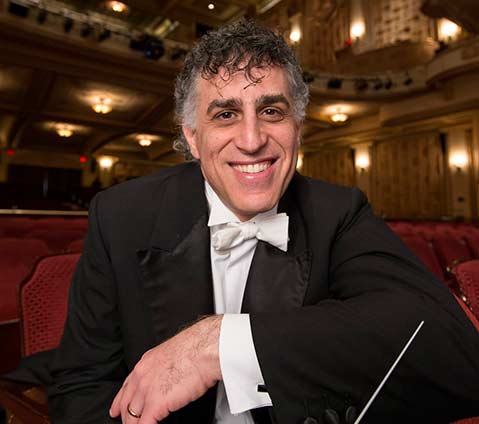S.B. Symphony Celebrates 10 Years of Nir
Concert Features Jon Lewis as Trumpet Soloist

In 2006, Nir Kabaretti auditioned to become music director of the Santa Barbara Symphony by conducting Brahms at the Arlington Theatre. The hiring committee clearly liked what it heard, as the young man, then residing in Italy, got the job. On Saturday-Sunday, March 12-13, audiences at the Granada Theatre will hear the Symphony No. 2 of Johannes Brahms again, when the orchestra celebrates entering its second decade under Kabaretti’s baton by revisiting the work that landed him his spot. A lot has changed since 2006, both for the maestro and for the S.B. Symphony, and when I spoke with him last week about the upcoming concert and the decade of work that it commemorates, he was justifiably proud of what he and the organization have accomplished in that time, and profoundly grateful for the opportunity to become a part of Santa Barbara’s extraordinarily robust culture.
You have Jon Lewis scheduled to play the Hummel concerto for trumpet in this program. Could you reflect on that choice, and on the history of guest artists you have worked with over the last 10 years? We have been fortunate to have more than 50 guest artists perform with us in a decade. They range from people like Lang Lang and Hélène Grimaud, who are clearly major attractions in their own right, to other rising stars who are less well-known but are on their way to being great. I chose Jon Lewis for this program because it’s a celebratory occasion for the orchestra, and I wanted the soloist to come from its ranks. Plus Jon is a magnificent musician, so it is always a pleasure to bring him to the front. There aren’t that many concertos written for the trumpet, and it’s not the kind of piece that a touring orchestra would program, so I feel it’s a good choice for us because we know it will complement the wonderful touring orchestra programs that also take place in our home, the Granada.
That’s interesting to hear that you think about programming in terms of what else people might hear at the Granada. Could you elaborate on how you see Santa Barbara in the context of the global music scene? Santa Barbara is a fascinating exception, and a great one, because musically we have the profile of a bigger city. We are very much on the international map, both as a touring destination and as a location that’s home to great musical organizations. How many cities can expect to see Yo-Yo Ma on a regular basis? He’s as in demand as any performer in the world, with London and Berlin always asking him to play, but somehow he winds up here.
Could you say more about the strategies you use to make your programs as strong as possible in this context? Our collaborations with other arts organizations in Santa Barbara are great examples of what we offer that touring orchestras would not do. Take Carmina Burana. Ninety-nine percent of the time this work is performed, it is done as a concert presentation. Because of the fact that we are all here in the same city, we could work with State Street Ballet and with the Santa Barbara Choral Society to realize the composer’s original intention and provide a fully staged version, something that most people would never have a chance to see. The switch that we made from the stage to the pit during intermission would be impossible in almost any other theater.
What is your vision for the next 10 years? I like to think about using the Granada as a European-style opera house — one building in which all the arts come together.
4.1.1
The Santa Barbara Symphony will perform at the Granada Theatre on Saturday, March 12, at 8 p.m. and on Sunday, March 13, at 3 p.m. For tickets and information, go to granadasb.org or call (805) 899-2222.



